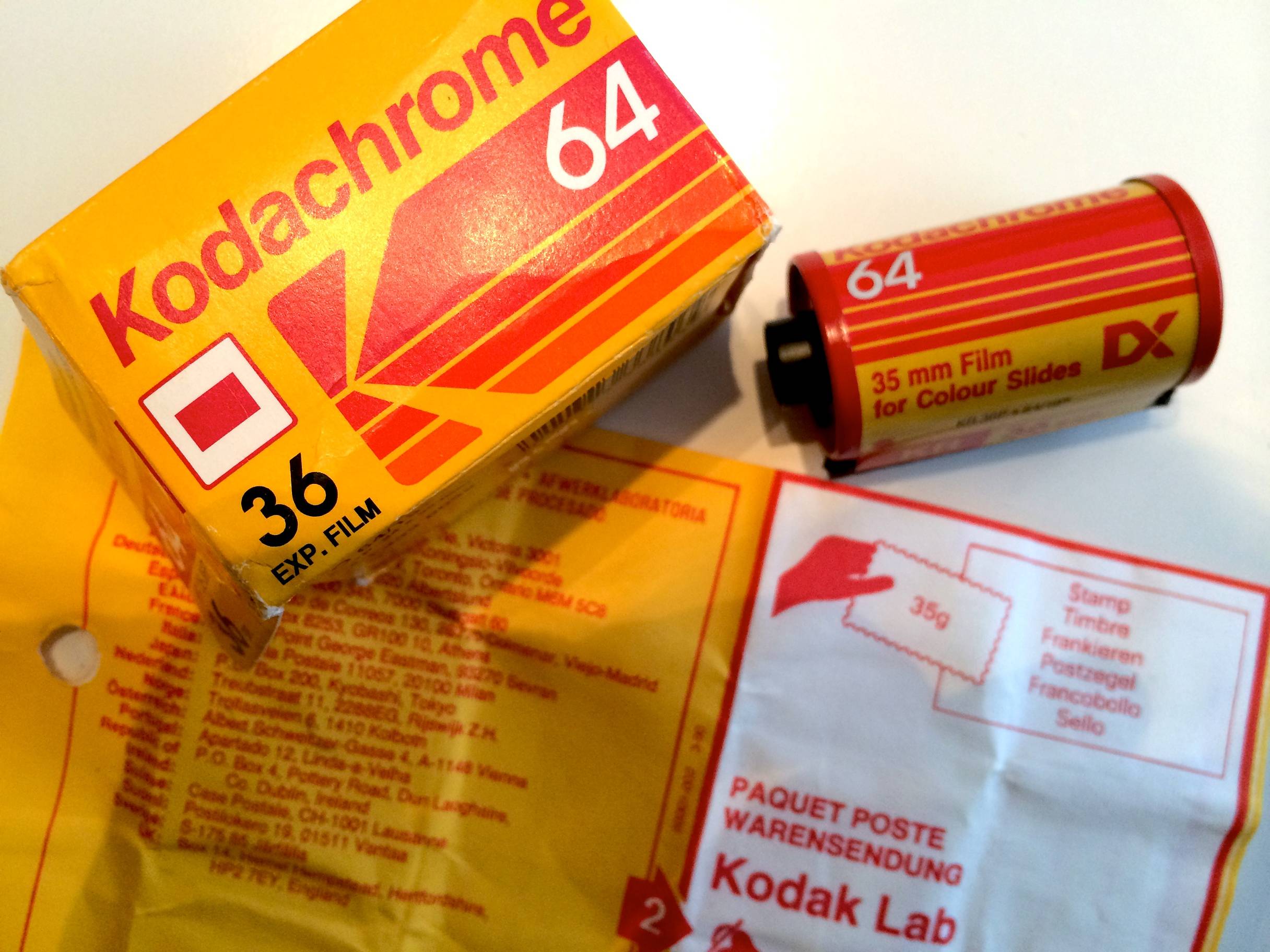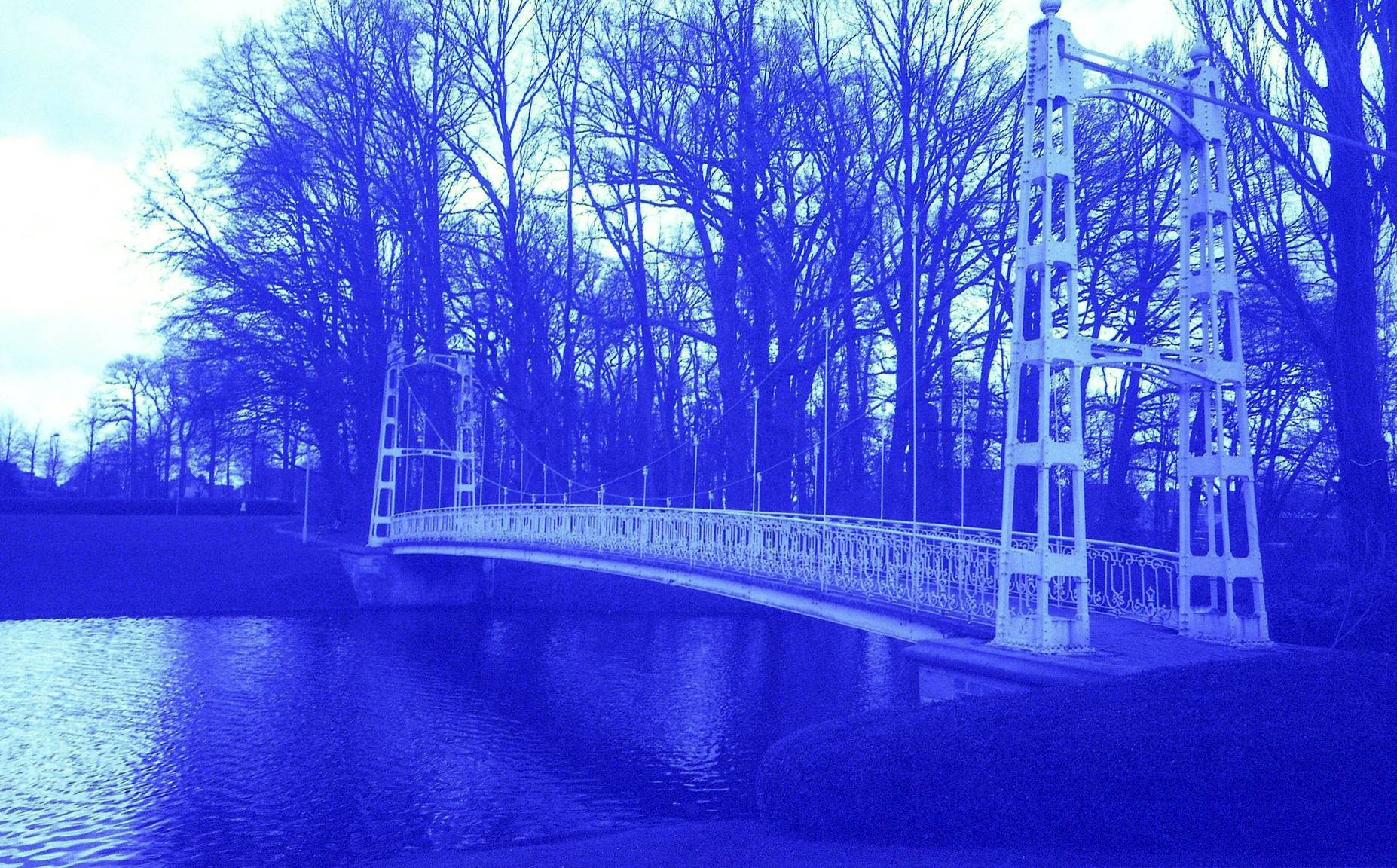Lomo Experiments: Bluescale Your Old Kodachrome 64 Stash!
11 36 Share TweetKodachrome is one of those golden films from a not too distant past that has died a sudden death. Not only because the film was taken out of production, but even more so because it can no longer be developed. Or can it? Read on to find out how you can easily get some seriously funky bluescale pics out of your forgotten Kodachrome 64 stash.

Those of you who are familiar with film development know that color negative film and slide film have their own development process: C-41 for color negatives and E6 for slides. Luckily for us Lomographers, it is even possible to mix things up and cross process CN and slide films in the “wrong” chemicals. Kodachrome however is an outcast in this respect. Firstly, it needs an entirely different process: K-14, and secondly, it can not be crossed neither in C-41 nor E6.
About 5 years ago, when Kodak stopped production of the Kodachrome 64 film, they also stopped production of the chemicals needed to develop the film. Although some labs held on a little longer, all K-14 development eventually ceased in early 2011. Ever since, it has been impossible to color develop this gorgeous film.

There have been a few brave adventurers who have tried to develop this film with BW chemicals. Searching the Internet, you’ll find sparse reports of these attempts – some more successful then others, but all mentioning the same problem: remjet. Apparently, the trouble isn’t in the developing part, you can use regular BW chemicals to do just that. The problem arises when you take your film out of the tank and face having to remove the pitch black remjet backing. Soaking the film in a borax solution seems to help to soften the remjet, after which you can remove it using a soft sponge or just your fingers. But however soft you get the remjet, this is no easy feat as you don’t want any of the black stuff to stick to the emulsion side of the film. In short, even though it seemed possible to develop Kodachrome as BW, reading all these horrific remjet stories made me wonder whether it was even worth the trouble.
Having a weak spot for Caffenol development, I decided to ask for help on the Caffenol FB-group. In response to my question, someone mentioned that due to the higher pH level of the Caffenol solution, the borax solution might not be necessary. That seemed to make sense, enough so for me to go for it and give it a try. So I shot the film (expired 1992) at box speed and developed it in Caffenol-C-M. After pouring out the Caffenol I decided to rinse the film for 2 minutes rather then using a stop solution.
That turned out to be a good decision: as soon as the water started flowing through the tank I noticed the water turned black… REMJET!!! The Caffenol had done a great job and weakened the remjet to the point that it just dissolved and came off the film by running water through the tank. Just to be on the safe side I filled the tank half way, closed it, and gave it a good shake. Repeating this 3 times was enough to get clear water. Before giving you the complete protocol, have a look of what the negative looked like when it came out of the tank:

This looks pretty great, right?! Very clear negatives, not a hint of the dreaded remjet! As you can see, the base is a very bright yellow (in all honesty, it did darken a bit after drying). So when you scan these as color negative film you’l get the inverse of yellow… BLUE! Have a look at these funky bluescaled Kodachrome pics:
TUTORIAL
- Prepare your solutions
Keeping in mind a higher pH would possibly help with the remjet, I opted for the Caffenol-C-M recipe as it can be found in the Caffenol cookbook. The only adjustment I made was adding a bit more potassium bromide then the standard recipe.
To a final end volume of 300ml:
- 16.2g washing soda
- 4.8g VitC
- 12g instant coffee
- 0.4g KBr
Add the ingredients in order, making sure each component has dissolved before adding the next. When the solution is ready, leave it to rest for 5 minutes. Give it a final good stir and you’re ready to start developing.
- Development protocol
As usual, development times depend on temperature. This is the schedule I followed with a temp. of 21°C.
presoak: 2 minutes in water
develop: 20 minutes in caffenol-C-M
stop: stop development by rinsing with plenty of water. This is were magic happens and the remjet disappears. Fill your tank half way, close, shake, pour out black water. Repeat until the water comes out clear.
fix: 5 minutes (depends on the fixer you use, I used Maco Ecoprint).
rinse: use running tap water for 3 minutes or fill/dump at least 5 tank volumes
- Scanning tips
As you just developed the film in BW chemicals, the results is a BW negative. The obvious thing would be to scan as BW negative, and if that is what you prefer, then by all means do exactly that. But if you’re anything like me, that bright yellow-black combo might inspire you to scan as color negative. This will invert the result into a funky white-blue combo. Remember to turn of all color restoration settings in your scanning software.
So if you too have a hidden and forgotten stash of Kodachrome 64, the time has come to blow off the dust and get to work!

written by sandravo on 2014-02-19 #gear #tutorials #tutorial #bluescale #tipster #kodachrome #development #caffenol #k-14 #select-type-of-tipster #select-what-this-tipster-is-about #blueprint #requested-post #remjet #lomo-experiment






















11 Comments